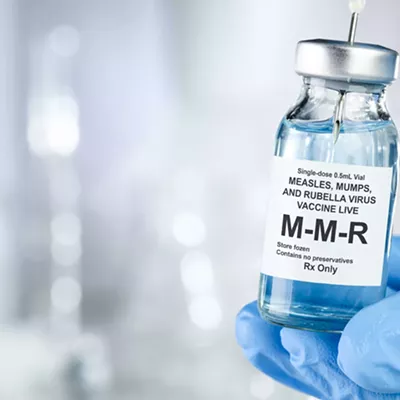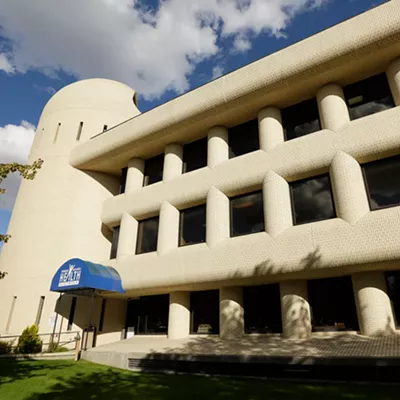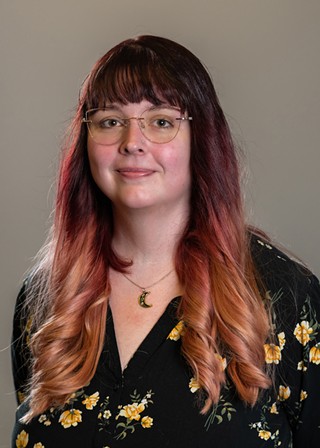
This time three years ago, the Nez Perce Tribe shared what's at stake if salmon populations in the Columbia-Snake river system don't recover.
The extensive story in the Seattle Times by Lynda Mapes outlined the ongoing fight to remove dams that have devastated salmon runs over the last century, and highlighted the tribe's thousands of years of connection with the land in what's now known as Idaho, Oregon and Washington.
Salmon once made up 60% to 70% of the Nez Perce diet, but as the river systems were dammed and the fish runs became threatened, the health of the tribe's members suffered as well.
This despite the fact that the right to hunt, gather and fish in usual and accustomed areas was explicitly guaranteed under an 1855 treaty with the United States. As Mapes' sources pointed out, treaties are the supreme law of the land, but those 170-year-old promises have not been upheld. Just as the land that was once guaranteed to tribes has shrunk over time, so have the natural resources.
The article laid the groundwork for the tribe's recent documentary Covenant of the Salmon People, which was first released this spring and has been airing on PBS throughout November.
For decades, the conversation has focused on whether or not to breach the four lower Snake River dams to restore the flow of the river, which has artificially stagnated for hydropower, barging and irrigation.
But Shannon Wheeler, chairman of the tribe's executive committee, says the story is larger and more interconnected for the Nez Perce.
"There's more to it than just dams versus salmon," Wheeler says. "It's not only a tribal injustice story, but environmental injustices that are happening here with the system."
It took about two years from conception to the release of the documentary, which was made by Swiftwater Films. The film has already won awards and will be entered in more festivals as the tribe continues to get its message out to a broader audience.
"We want to give people a true understanding of the position we're up against right now," Wheeler says.
The film takes viewers to an impressive number of locations, from the tribe's restoration site at the Crooked River in southeastern Idaho to the inner workings of the dams hundreds of miles away that block the natural route from the mountains to the sea.
Viewers go on a journey to catch spring chinook in "Zone 6" along the Columbia River, a 147-mile stretch between the Bonneville and McNary dams where treaty tribes have the exclusive rights to commercial fishing. The ceremonial first salmon of the year are packed on ice and taken back to the tribe's reservation east of Lewiston, where the catch is shared in a first foods ceremony in Lapwai and delivered to members in Orofino and other towns.
As shown in the documentary, the tribe also works to raise awareness in Congress, which has the final say on dam removal.
Wheeler says he applauds the Biden administration's September agreement with the Upper Columbia United Tribes (including the Spokane, Coeur d'Alene and Confederated Tribes of the Colville Reservation) to restore salmon in the upper Columbia Basin, and sees it as a hopeful sign.
"We support our sister tribes in their recovery efforts," Wheeler says. "I think it's only going to help people understand the importance of salmon in the water."
Snake River chinook and sockeye are considered "threatened" and "endangered" under the Endangered Species Act. The tribe's fisheries department also closely monitors other declining anadromous fish — which transition from freshwater to saltwater and back to spawn — including steelhead and lamprey.
"For spring chinook and steelhead, those species are incredibly important because they range throughout such a massive amount of the Snake River basin that is encompassed by wilderness," says Dave Johnson, Nez Perce fisheries department manager. "We can't really do much to fix that habitat that's in the wilderness area, and our ability to apply some other tools like hatchery programs is really limited."
Fall chinook spawn in the main stem of the river, Johnson says, where it's easier to supplement the wild population with hatchery fish.
"The tribe has been successful in bringing back Snake River fall chinook," Johnson says. "But steelhead and spring chinook are really in trouble, and we can't do much other than to address the dams."
To see salmon return to healthy levels, where there are plenty of fish to catch, eat and sell, about 4% need to survive from the time they're juvenile smolts to adult fish returning to their home waters to spawn. They face a gantlet of predators, dams and warm water along the way.
Known as the smolt-to-adult return rate, a 2% survival rate would simply hold the population steady, with enough survivors to replace the parents, says Jay Hesse, director of biological services in the tribe's fisheries department.
"Four percent allows those populations to grow over time and provide some increased harvest opportunity," Hesse says.
As shown in the documentary, because the runs have been so low in recent years, the tribe has had to curtail its early catch in Zone 6. Previously each family might receive dozens of fish, but recently it's been more like a third to a half of a fish per person.
Find more about the documentary and upcoming showings at CovenantOfTheSalmonPeople.com.
"Activities involved with getting fish, harvesting fish, taking care of fish, they can't exist when you only have a handful of fish coming back," Johnson says.
But as long as the fish aren't extinct yet, there's hope to restore that important relationship. Chairman Wheeler imagines a time decades from now, after runs have been restored, when someone can take their daughter, son or grandchild fishing.
"It could be a day trip or a weeklong camping trip, but somewhere along that line you'll be in the water," Wheeler says. "You may have one splashing on the bank and the excitement that comes from that, but also the spirituality that comes from that, and the respect you have for a brother or sister salmon that swam to the ocean and came back — the ultimate range animal."
The experience and the meal you share together creates an impactful memory, he says. When that grandchild takes their grandchild fishing, they'll say your name as they continue the tradition.
"You create a legacy with this," Wheeler says. "Those types of interactions with the land and with the salmon, you can't make those up. You have to live that, and things will change for you, things will come to you in a good way. And salmon means that to us." ♦
























